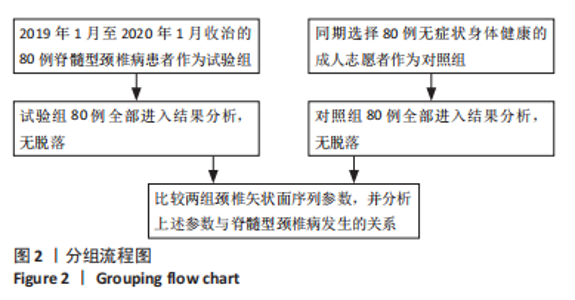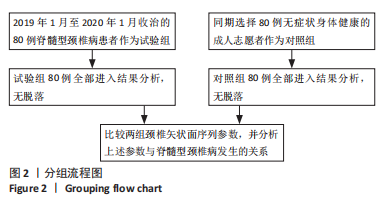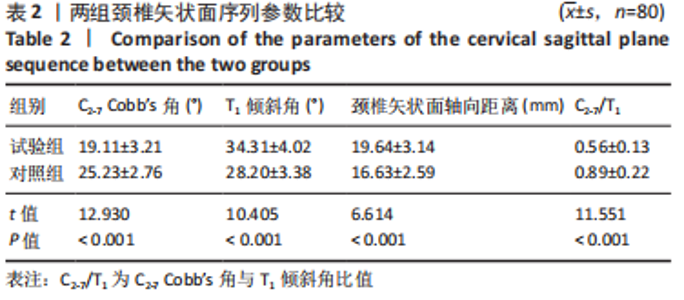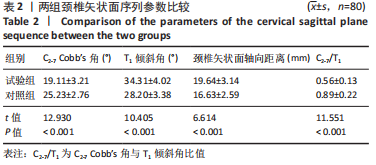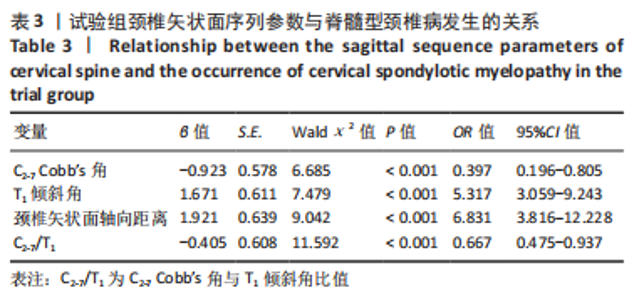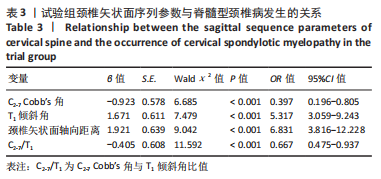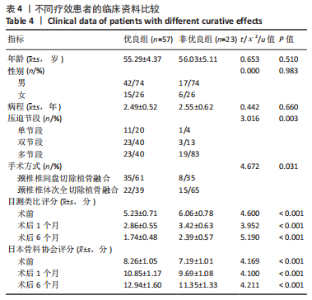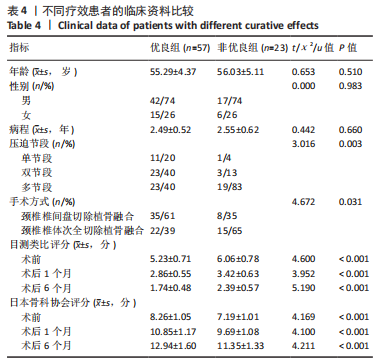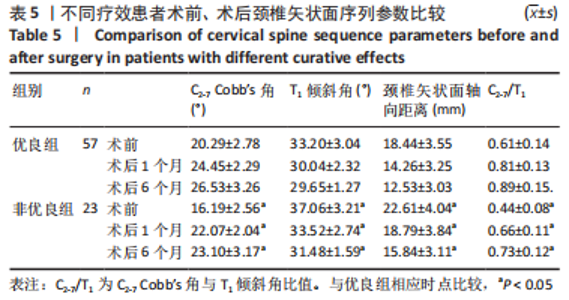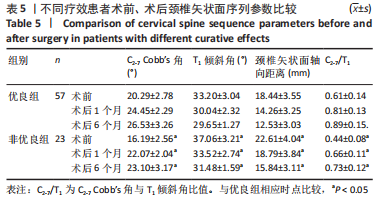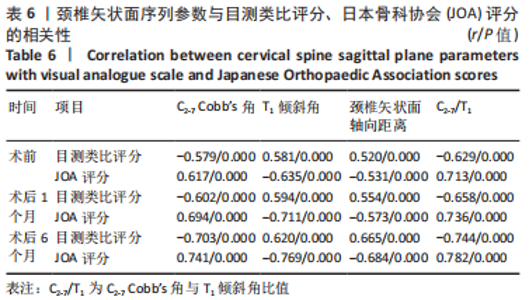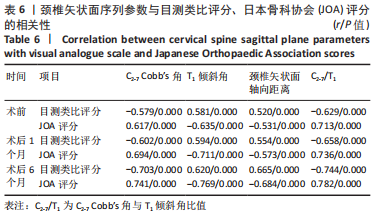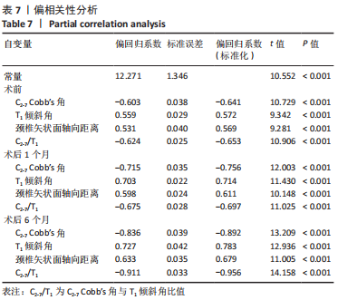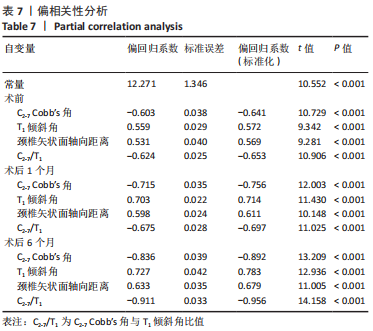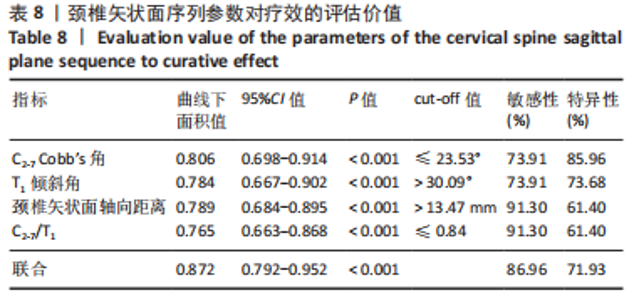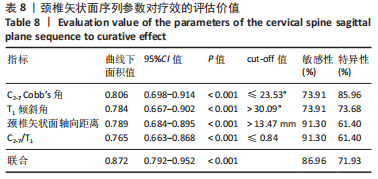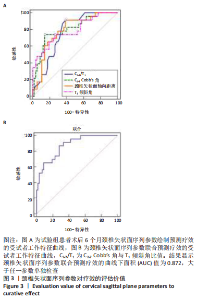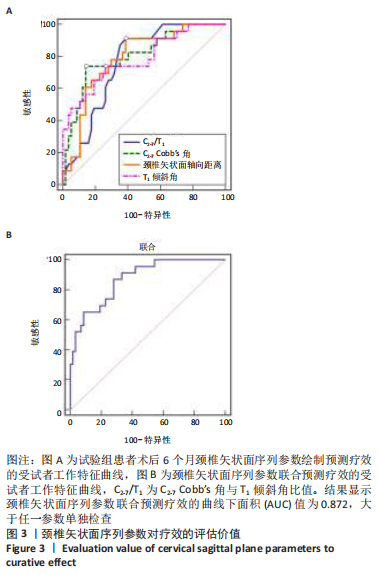[1] 张宁,宋卿鹏,田伟,等.剪切波弹性成像在颈椎病患者脊髓功能障碍评估中的价值[J].山东医药,2018,58(21):29-31.
[2] 梁磊,刘文德,陈可夫,等.单开门椎管扩大成形微型钛板固定术治疗多节段脊髓型颈椎病的疗效观察[J].中国矫形外科杂志,2017, 25(13):1183-1186.
[3] OKAZAKI T, NAKAGAWA H, MURE H, et al. Microdiscectomy and Foraminotomy in Cervical Spondylotic Myelopathy and Radiculopathy. Neurol Med Chir (Tokyo). 2018;58(11):468-476.
[4] 文天林,孙天胜.脊髓型颈椎病的病理演变和治疗研究进展[J].人民军医,2017,60(1):75-76.
[5] 林楚华,李颖彬,李义凯.脊髓型颈椎病伴大块椎间盘突出保守治疗1例及文献回顾[J].中国临床解剖学杂志,2017,35(3):341-345.
[6] 刘国臻,刘磊,王运涛,等.脊髓型颈椎病术前矢状面影像学参数特点及相互关系[J].中国矫形外科杂志,2018,26(21):1992-1996.
[7] 李翔宇,孙祥耀,鲁世保,等.颈椎矢状位序列参数对脊髓型颈椎病临床疗效的影响[J].中国骨与关节杂志,2018,7(11):867-872.
[8] 中华外科杂志编辑部.颈椎病的分型、诊断及非手术治疗专家共识(2018)[J].中华外科杂志,2018,56(6):401-402.
[9] ALLI S, ANDERSON I, KHAN S. Cervical spondylotic myelopathy. Br J Hosp Med (Lond). 2017;78(3):C34-C37.
[10] 朱玉权,曹建辉,王乾,等.基于影像学角度进行脊髓型颈椎病发病的多因素Logistic回归分析[J].颈腰痛杂志,2019,40(3):347-349.
[11] 余文超,袁文,陈华江,等.脊髓型颈椎病颈前路手术对术后颈椎矢状位平衡参数的影响[J].中华骨科杂志,2018,38(21):1285.
[12] 康猛,宋振全,潘冬生,等.影响颈椎后路减压内固定术治疗脊髓型颈椎病预后的影像学因素分析[J].中国脊柱脊髓杂志,2019,29(9): 799-804.
[13] ZHANG JT, LI JQ, NIU RJ, et al. Predictors of cervical lordosis loss after laminoplasty in patients with cervical spondylotic myelopathy. Eur Spine J. 2017;26(4):1205-1210.
[14] HUN S, LEE, WUK D, et al. Does Extension Dysfunction Affect Postoperative Loss of Cervical Lordosis in Patients who Undergo Laminoplasty. Spine (Phila Pa 1976). 2019;44(8):E456-E464.
[15] 王广超,李永军,吕志刚.颈椎间盘退变程度与颈椎矢状力线参数的相关性分析[J].颈腰痛杂志,2020,41(1):32-35.
[16] IPPEI KITADE RA, HIDEAKI NAKAJIMA B, AI TAKAHASHI AB, et al. Kinematic,kinetic,and musculoskeletal modeling analysis of gait in patients with cervical myelopathy using a severity classification. Spine J. 2020;20(7):1096-1105.
[17] 王善金,徐浩伟,曹东亮,等.颈椎矢状面参数的研究进展[J].颈腰痛杂志,2020,41(1):109-111.
[18] LI Z, HUANG J, ZHANG Z, et al. A Comparison of Multilevel Anterior Cervical Discectomy and Corpectomy in Patients with 4-level Cervical Spondylotic Myelopathy: A Minimum 2-year Follow-up Study. Clin Spine Surg. 2017;30(5):E540-E546.
[19] 马金铭,芦健民.脊髓型颈椎病的临床研究进展[J].承德医学院学报,2020,37(3):251-254.
[20] 蒋雯,韩骁,李广祺,等.脊髓型颈椎病颈髓与手术效果间关系的DTI研究[J].放射学实践,2018,33(9):893-897.
[21] 李翔,陆瓞骥,胡勇.磁共振弥散张量成像对脊髓型颈椎病患者术后神经功能恢复的预测作用[J].中国脊柱脊髓杂志,2019,29(5): 385-393.
[22] 申沧海,徐宝山,杨强,等.MRIT2加权像与扩散张量成像量化指标对脊髓型颈椎病术后脊髓功能恢复的预测价值[J].中华物理医学与康复杂志,2017,39(7):492-497.
|
